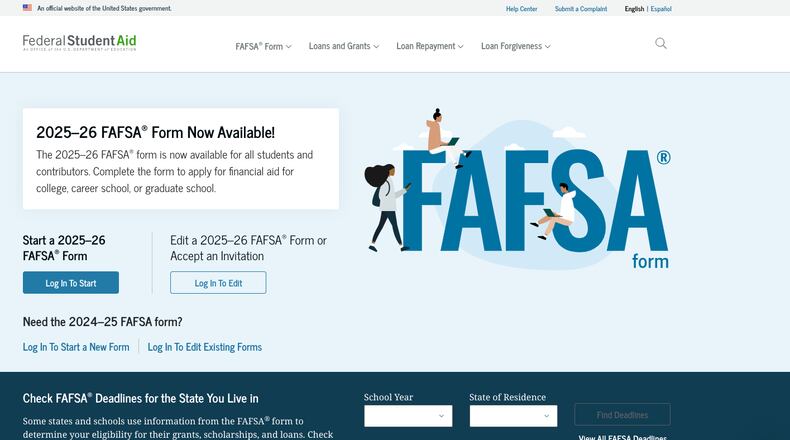The Department says it tested the application with several groups, including those who struggled to submit the FAFSA last year.
“After months of hard work and lots of feedback from students, schools, and other stakeholders, we can say with confidence that FAFSA is working and will serve as the gateway to college access and affordability to millions of students,” said U.S. Secretary of Education Miguel Cardona.
Last year thousands of students, including many locally, said they struggled to submit their FAFSA or to make corrections to their submitted forms. One Germantown family said they didn’t get a financial aid package before their son went to college because they were not able to submit a correction to their FAFSA online.
The new FAFSA is meant to be simpler and it asks fewer questions. Last year, the form wasn’t available until January. When it did become available, many people were unable to access it due to a slow website.
Problems with the FAFSA led to fewer students completing the application going into this school year. FAFSA completions correlate with higher education enrollment, as they are the pathway for federal grants and loans.
According to the FAFSA Tracker – National, Ohio, about 59% of students had completed a FAFSA for the current 2024-25 school year as of Sept. 30. About 7,700 fewer students completed the FAFSA in Ohio than the year before, according to the same source. Completions were down 8.8%.
Chalkbeat, an education-focused news outlet, calculated FAFSA submissions are down about 11.6% nationally. But some local universities, including the University of Dayton, Cedarville and Wilberforce University, saw an increase in the percentage of enrolled students who had completed the FAFSA.
Local counselors worry that the struggles so many heard about or saw last year with the FAFSA might still affect students this year.
Alexandria Burns is the director of programs and operations for Bottom Line, which is a nonprofit new to Dayton focused on helping kids from underresourced backgrounds with average grades get into and complete college. Bottom Line is targeting schools like Dayton Public’s high schools and Wright State University.
Burns said the FAFSA process is expected to be simplified and user-friendly, especially for first-time applicants.
“Anecdotally, our partners who participated in the FAFSA Beta 4 release have shared that the FAFSA process has become significantly faster and easier to navigate,” Burns said. “Additionally, they’ve reported that students selected for verification are now receiving notifications within 24 hours, a substantial improvement over previous years.”
Burns said it would be critical for students and families to stay on top of deadlines and make sure to read every step in the application carefully this year.
For immigrant families, the process may be more fraught this year, she said. In some cases, submitting a FAFSA may not be worth it. Financial aid offices at the university of choice can help families struggling with that decision.
“For households with varying immigration statuses, it’s especially important to carefully consider the potential risks and benefits of submitting a FAFSA,” Burns said. “Trusted organizations like the National College Attainment Network (NCAN) recommend weighing these factors, particularly when creating FSA IDs or applying for the first time.”
But Burns also encouraged students to submit a FAFSA if they can, even if they don’t think they qualify for any federal aid.
“Many types of financial aid — such as grants, scholarships, and work-study opportunities — are available based on need or merit,” Burns said. “By submitting the FAFSA, students open the door to a variety of financial resources that can make their higher education dreams more achievable.”
About the Author

